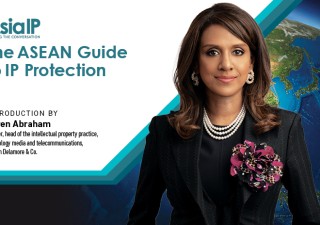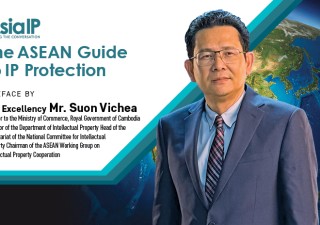The leap towards Malaysia 5.0
31 August 2021

In the wake of the Covid-19 pandemic, and on the precipice of economic decline, the previous Malaysian government on January 7, 2021, released a new Fourth Industrial Revolution (4IR) policy, firmly sealing its agenda to align with the Pillars of the 4IR in order to spark national development and ease integration into the digital economy.
This initiative is intended to pull Malaysia towards the ideal of “Society 5.0” – a phrase coined by Japan to describe the re-engineering of the human experience to one which is people-centric, hyper-intelligent, and blurs the lines between cyberspace and physical space. A society which breeds inclusivity, equity, and technological creativity.
However, this begs the obvious question: is Malaysia ready for such advancement?
Needless to say, staying afloat in the 4IR will heavily depend on legislative and judicial support. In the following article, we will look at a selection of laws, policies, and systems which are heavily-used in the legal world, to review them against the litmus test of the 4IR propelled by the global pandemic.
Statute and systems
Courts of Judicature Act 1964
Even before the passing of any legislation, the Malaysian Judiciary, in recognizing the benefits of online hearings, were quick to cement the importance and usefulness of holding court proceedings online. In April 2020, Justice Khian Kheong Wong published the first written decision on the validity of hearings held via Skype. It was held that the court may order for certain proceedings to be had online, so as not to deprive any person of their Constitutional right of access to justice, so long as to do so is in the interests of justice.
The Courts of Judicature Act 1964 (CJA) was amended in October 2020 to include Section 15A, which provided instant respite to the courts from the pile-up of cases caused by the many iterations of the Movement Control Orders. Prior to this amendment, the courts were required to obtain the consent of both parties to proceed via electronic means. In the circumstance of any objection, proceedings would have to be postponed far into the future, atop the ever-growing backlog of cases.
Section 15A of the CJA reads as follows:
“(1) Without limiting section 15, the Court may, in the interest of justice, conduct the proceedings of any cause or matter, civil or criminal, through a remote communication technology.
(2) In the case of the High Court, the place in which the High Court is held to conduct the proceedings of any cause or matter, civil or criminal, through a remote communication technology shall be deemed to be conducted within the local jurisdiction of such High Court.
(3) Nothing in this section shall affect the operation of section 5 of the Evidence of Child Witness Act 2007 [Act 676], sections 265A and 272B of the Criminal Procedure Code [Act 593] and section 32A of the Evidence Act 1950 [Act 56].
(4) In this section, "place" includes cyberspace, virtual place or virtual space.”
Accordingly, the courts have been able to conduct proceedings via video conferencing, email, and the court’s own online chat platform named e-Review. This is a clear step in the right direction which was, for better or worse, brought about by the pandemic.
Trademarks Act 2019
The relatively new Trademarks Act 2019 (TMA) expressly allows for Malaysia’s accession to the Madrid Protocol, which allows for the filing and management of a single application with a single set of fees to apply for trademark protection in up to 124 member countries. Moreover, the application may be done with a single attorney, rather than requiring instruction of multiple local attorneys. This makes it much easier and more affordable for foreign applicants to register their trademarks in Malaysia, and vice versa.
The TMA further empowers the Minister of Domestic Trade and Consumer Affairs to prescribe regulations in order to integrate national procedures with those of the Madrid Protocol.
With the objective of creating an environment for trading in intellectual property, a new Part IX has been introduced to the TMA to expressly recognize trademark rights as a form of security or collateral in any financing arrangement. By way of example, Section 62 of the TMA reads:
“A registered trademark shall be a personal or moveable property and may be the subject of a security interest in the same way as other personal or moveable property.”
These provisions will provide an added incentive for proprietors to register their trademark, aside from the usual rights accrued.
Regarding practical systems, the Online Search and Filing System of the Intellectual Property Corporation of Malaysia provides a more organised, convenient, and environmentally-friendly approach to intellectual property protection and management. The system encourages online applications, payments, and digitization of all documentation related to intellectual property filings.
Digital Signature Act 1997 and Electronic Commerce Act 2006
It is considered entirely commonplace in business practice to accept electronic and digital signatures as being equally as legal and valid as a wet-ink signature.
In Malaysian law, electronic signatures and digital signatures are defined distinctly, and are governed by separate acts.
|
DIGITAL SIGNATURE
|
ELECTRONIC SIGNATURE
|
Governed by Digital Signature Act 1997 (DSA) |
Governed by Electronic Commerce Act 2006 (ECA) |
Uses an asymmetric cryptosystem verified by reference to the public key listed in a valid certificate issued by a licensed certifiation authority |
Any letter, character, number, sound or any other symbol or any combination thereof created in an electronic form adopted by a person as a signature. |
Table 1. Definitions of Digital Signature under the DSA and or Electronic Signature under the ECA.
From the given definitions, a digital signature may be considered a subset of electronic signatures, with stricter certification and security protections imposed.
Clearly, the ECA does not preclude the use of “digital signatures” as defined under Section 2 of the DSA in electronic commercial transactions. Parties to an agreement are free to elect to use a “digital signature” as an “electronic signature”. In such instances, pursuant to Section 9(3) of the ECA, the provisions of the DSA shall continue to apply.
With regards to formation of contracts, the ECA makes clear that any information shall not be denied legal effect, validity or enforceability on the ground that it is wholly or partly in an electronic form or is referred to in an electronic message. As such, proposals and acceptances may be by done by way of electronic messages, which are defined in the ECA as “information generated, sent, received or stored by electronic means”.
Further, under Section 8 of the ECA, any legal requirement for information to be in writing is met by an electronic message that is “accessible and intelligible”.
The requirements for an electronic signature to legally stand in for a handwritten signature are as follows:
- The document to be signed is in the form of an electronic message;
- The electronic signature is attached to or is logically associated with the electronic message;
- The electronic signature adequatelyidentifies the person and adequately indicates the person’s approvalof the information to which the signature relates; and
- The electronic signature is as reliable as is appropriategiven the purpose for which, and the circumstances in which, the signature is required.
In the Federal Court’s decision in Yam Kong Seng v. Yee Weng Kai[2014] 4 MLJ 478, the learned Suriyadi FCJ on behalf of the court held as follows:
“[27]With the prevailing technological advancement made (and unstoppable at that), record keeping for businesses or daily affairs exchange have moved away from the laborious format of writing to the overly dependence on computers, and of which the mobile phone is one. In short we are slowly turning into a paperless society. Dictated by common sense and justice it is no surprise that not only the conservative courts but also Parliament have taken the approach that writing need not be handwritten (SM Integrated Transware Pte Ltd v. Schenker Singapore (Pte) Ltd [2005] 2 SLR 651).
…
[37] Under s 6 of the ECA it is legislated that any information shall not be denied legal effect, validity or enforceability on the ground that it is wholly or partly in an electronic form. Section 9 of the ECA is more comprehensive in that where any law requires a signature of a person on a document, the requirement of the law is fulfilled if the document is in the form of an electronic message (the SMS in this case), by an electronic signature subject to the collective demands of sub-paras (a) to (c). For purposes of this appeal the legal requirement for a signature is fulfilled as, inter alia, the sender is adequately identified let alone admitted by him.”
Policy
The national digital ID
Driven by the pandemic, the global share of retail sales accounted for by online retail sales jumped from 16 percent to 19 percent in 2020, according to the United Nations Conference on Trade and Development (UNCTAD). Market research company eMarketer predicts that Asia-Pacific will account for a whopping 60.8 percent of all retail ecommerce sales in 2021, wherein ecommerce sales worldwide are expected to reach US$4.921 trillion as the pandemic endures.
A project which has long been underway to address, amongst others, growing interest in ecommerce, is the Malaysian National Digital ID. In essence, the initiative is aimed at providing a secure method of authenticating users’ identity virtually. The National Digital Identity is intended to be an all-in-one highly secure access pass which stores users’ personal information, including name, age, and address, as well as fingerprints, iris recognition, and facial recognition. The proposed uses of the National Digital ID include government use, healthcare, education, banking, ecommerce, and identification.
While similar systems have been implemented in other countries, including Estonia, Canada, Morocco, and Australia, it ought to be mentioned that certain cases should serve as cautionary tales. In India, for example, users of the Aadhaar system have fallen victim to many (and sometimes quite severe) security lapses, resulting in leaks of thousands of users’ private data.
The 4IR Policy
The 4IR Policy aims to fulfil three main missions of improved quality of life, being enhanced integration of 4IR tech, and environmental preservation through four ‘policy-thrusts’, using five of the foundational 4IR technologies (namely AI, IoT, blockchain, cloud computing and big data analytics, and advanced materials and technologies). This 4IR technology is to be deployed and successfully integrated in what have been identified as ten key focus sectors, including finance, ecommerce, healthcare, and education.
If the “reality check” of the Covid-19 pandemic has been any indicator, it is that Malaysia is currently underprepared and underserved in certain sectors with regards to digital transformation, particularly in accessibility to tech within the education sector and amongst underprivileged and rural populations.
As such, perhaps the most encouraging and important policy-thrust outlined is the recognition of the need to educate the general population, particularly minorities and underprivileged communities. This marks a respectable plan to elevate Malaysian society as a whole and reduce the risk of technology-led job displacement amongst already vulnerable populations.
With regards to healthcare, it is worth briefly mentioning here the interaction between the Medical Devices Act 2012 (MDA) and the 4IR Policy. As mentioned above, one of the prime objectives of the 4IR Policy is to integrate AI into the healthcare sector. This is somewhat already underway, with one example being Huawei Malaysia’s collaboration with the Malaysian Ministry of Health in April 2020 to contribute the Huawei Cloud AI-assisted diagnosis solution to Sungai Buloh Hospital in order to provide for faster and more accurate Covid-19 diagnosis.
The MDA, though quite broad, appears to be written with more traditional medical devices in mind, being heavily reliant on scientific- and clinical-validation to ensure the safety and efficacy of medical technologies. Unfortunately, not only does this clash with the autonomous black-box tendencies of many AI models, but it renders our existing framework unable to properly classify AI systems based on their adaptive risks. This poses the danger of causing incompatible conformity assessments to be applied in evaluating the safety of the AI, say the authors of a piece in the Environment-Behaviour Proceedings Journal entitled“Malaysian Medical Device Regulation for Artificial Intelligence in Healthcare: Have all the pieces fallen into position?” This is not a fault which lies solely with Malaysia – the complexities of effectively regulating AI are abundant in literature.
As such, although there is a clear role and need for AI in healthcare, and the 4IR Policy expressly recognizes this as a priority, our regulatory frameworks must take into account AI model development and methodologies to harness AI as a useful, safe, and effective medical tool.
Further, the 4IR Policy has been met with some criticism, in particular that although it demands greater supply of higher value-added activities and local development of sophisticated technologies, it has not provided any plan for how local demand will sustainably be encouraged to meet this increased supply of 4IR tech, writes Jotham Lim in “Is the National 4IR Policy missing its mark?” for the theedgemarkets.com website.
Conclusion
Although the first small steps have been taken in terms of the law, ultimately Malaysia is still a long way from achieving the future society of Malaysia 5.0. The 4IR Policy itself has recognized diminishing competitive edge and relatively low labour productivity. Without a sudden shift in culture and mindset, it seems unlikely Malaysia can attain the level of output and innovation required of a ‘next level’ society.
______________________________________________________________________________________________________

Sonali Nadkarni is an associate at Gan Partnership in Kuala Lumpur. She holds dual qualifications in law and biological sciences. She practices in dispute resolution, with a special focus on patents, utility innovations, life sciences and trademarks. She has assisted in a wide range of contentious intellectual property matters, from infringement proceedings before the High Court of Malaya to intellectual property prosecution. Her practice includes advising on intellectual property issues for a number of distinguished international and local clients, as well as in commercial disputes relating to contract and company.
Bahari Tien Hong Yeow is a partner at Gan Partnership in Kuala Lumpur. With over 20 years’ experience in the fields of intellectual property and litigation, Yeow built and headed a Legal 500 Tier 1 Intellectual Property, Technology, Media and Telecommunications team. He also led his previous firm to debut on WTR 1000 as the Top IP Firm in Malaysia notwithstanding being a fresh entry, before joining Gan Partnership together with his teams. In their first year of joining Gan Partnership, the firm won Dispute Resolution Boutique Law Firm of the Year for the first time.
Zhi Jian Lim, a partner and litigator at Gan Partnership in Kuala Lumpur who is highly ranked by numerous legal publications. began his career at Lee Hishammuddin Allen & Gledhill. He was made partner in 2018 before joining Gan Partnership three years later. In addition to litigation, Lim advises on protection, management and monetization of IP for his clients which include Fortune 500 entities, domestic and international public listed companies, government linked companies and tech startups. Lim serves as a member of the ICC Malaysia Intellectual Property Committee.
Alex Choo is an associate at Gan Partnership in Kuala Lumpur, where he focuses on IP and dispute resolution work. He has assisted in a range of contentious matters including IP infringement proceedings before the Courts of Malaysia, IP prosecution, corporate commercial disputes and Tribunal for Homebuyer Claims. His experience is not limited to contentious matters, with involvement in various advisory and regulatory capacities including licensing and assignment of IP rights, personal data protection and compliance.
Lih Jiun Ng is an associate at Gan Partnership in Kuala Lumpur. Her practice focuses on dispute resolution with an emphasis on intellectual property. She has assisted in various contentious IP matters, ranging from trademark infringement, passing off, and copyright infringement to domain name disputes. She is no stranger to non-contentious matters, having assisted in advisory, prosecution and enforcement works for various conglomerates in and outside Malaysia. She has experience in corporate commercial disputes and advising on various aspects of regulatory compliance for both local and foreign clients.







